
2022
Branding Strategies
Branding Research
Interaction Design
Graphic Design
Innovation for a Social Movement
Branding Research
Interaction Design
Graphic Design
Innovation for a Social Movement
ABOUT
Brands are every bit as social as they are commercial. Viewed through the lens of identity, brands hold the power to exploit, marginalize, and even create social identities. Similarly, brands play a vital—and sometimes violent—role in defining the “other,” blurring the line between profit and politics. In this project, I practice how to [de]brand and read REI Co-Op as a belief system that inscribes social codes.
Brands are every bit as social as they are commercial. Viewed through the lens of identity, brands hold the power to exploit, marginalize, and even create social identities. Similarly, brands play a vital—and sometimes violent—role in defining the “other,” blurring the line between profit and politics. In this project, I practice how to [de]brand and read REI Co-Op as a belief system that inscribes social codes.
What does it mean to “debrand” a brand identity?
The debranding prompt asks me as a designer to distance myself from the common-sense arrangements of REI's brand identity by subjecting it to a series of antagonistic studies. I deconstruct, resist, and transgress implied rules that hold the brand together through methods categorized as Inversions, Intensifications, and Identities. I change colors; break grids; alter, replace, or remove imagery through studies. This is meant to reveal and dismantle the designerly, ideological, and identitarian logic that REI depends on to organize itself and its consumers in particular relationships of power.
Project Overview
The project is organized in the format of a map, reminiscent of one you might find at a National Park. It shows inversion studies clustered near the Inverted Lake, intensification studies near the Desert of Intensifications, and identity studies near the Range of Identities.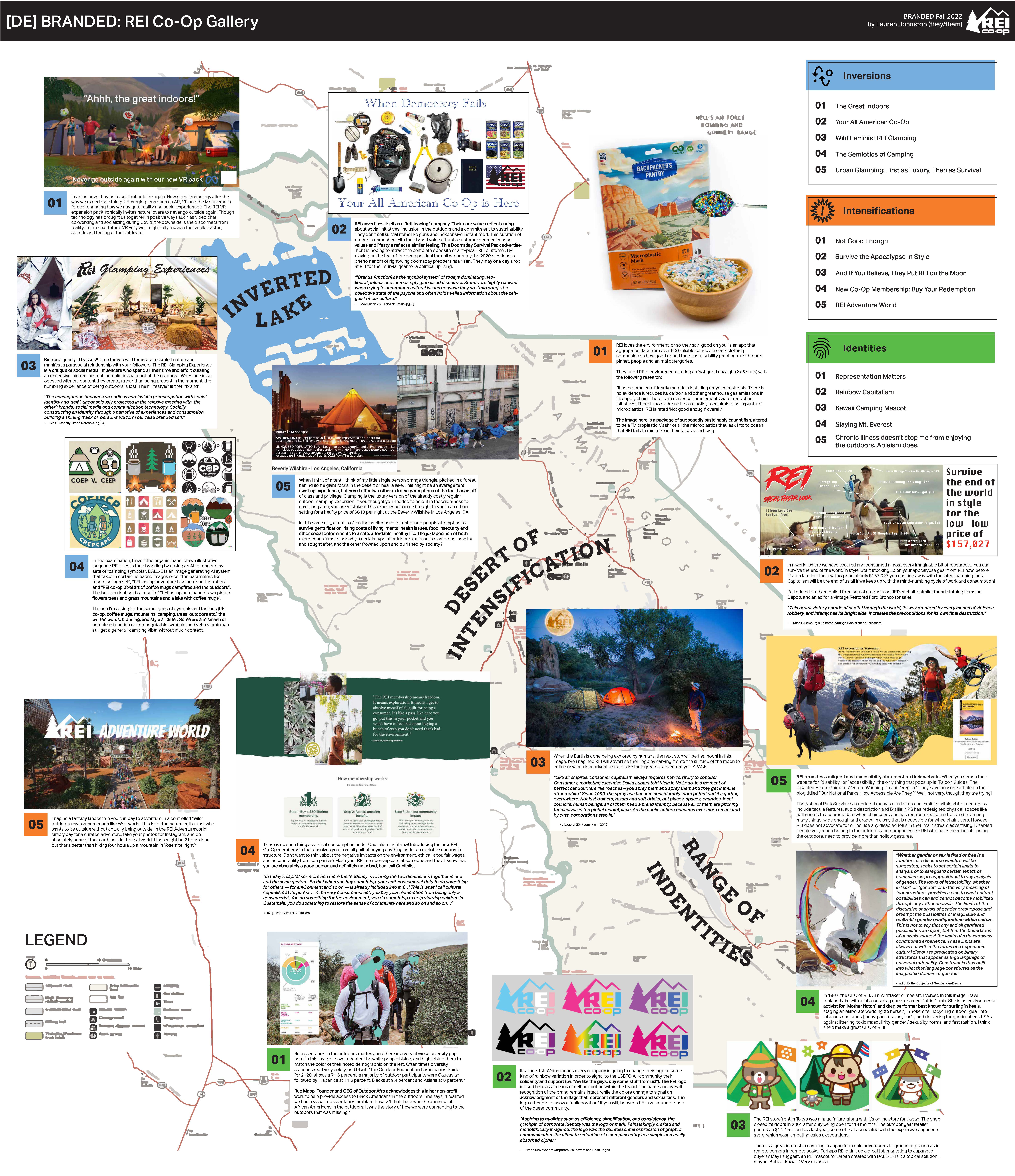
An Introduction to REI Co-Op
This section is under construction! Check back later.
Inversions
Inversions examine the brand in the opposite light. For example, if REI's target audience enjoys the outdoors, what would it look like for them to never go outside again?

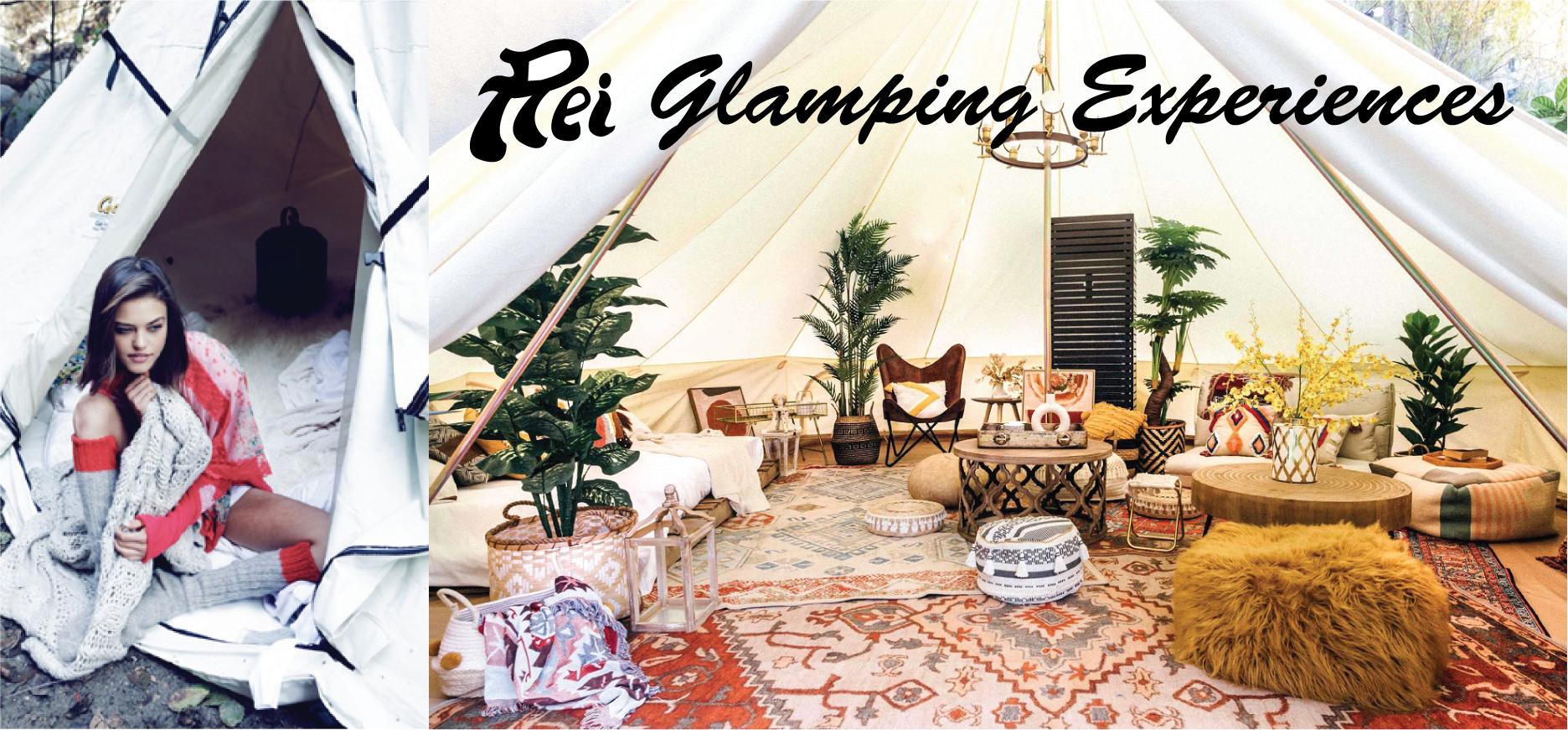

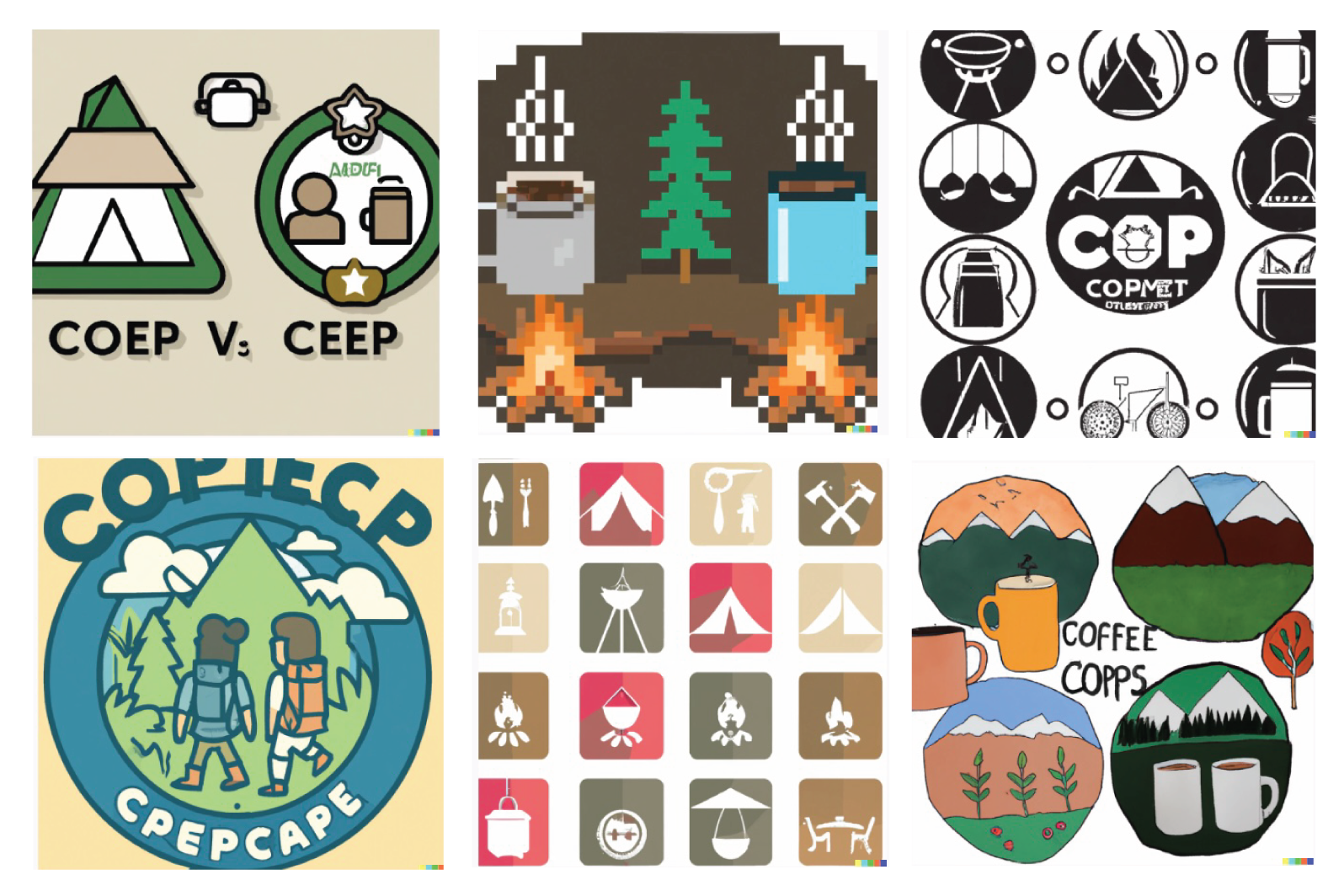

Intensifications
Intensifications take the brand identity and crank it up to 300% for unlikely scenarios and made-up projected target audiences (such as apocalypse survivors in the future).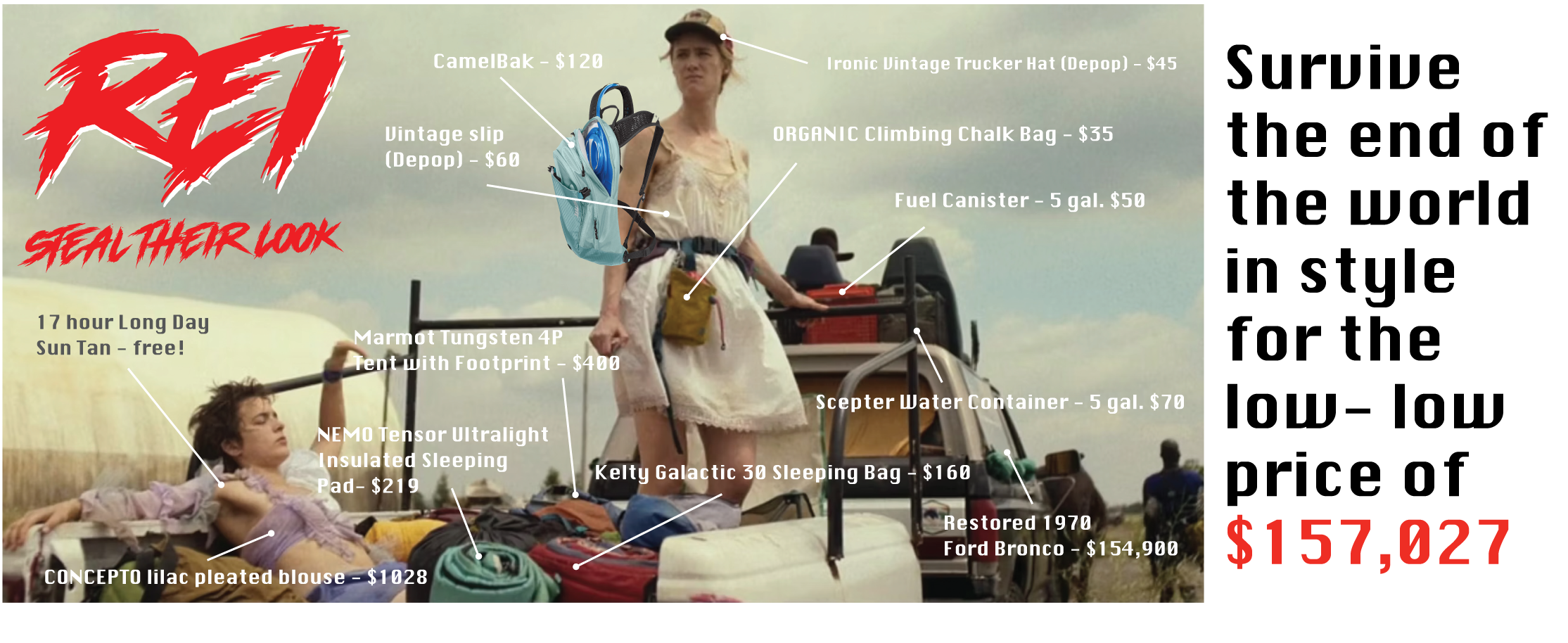

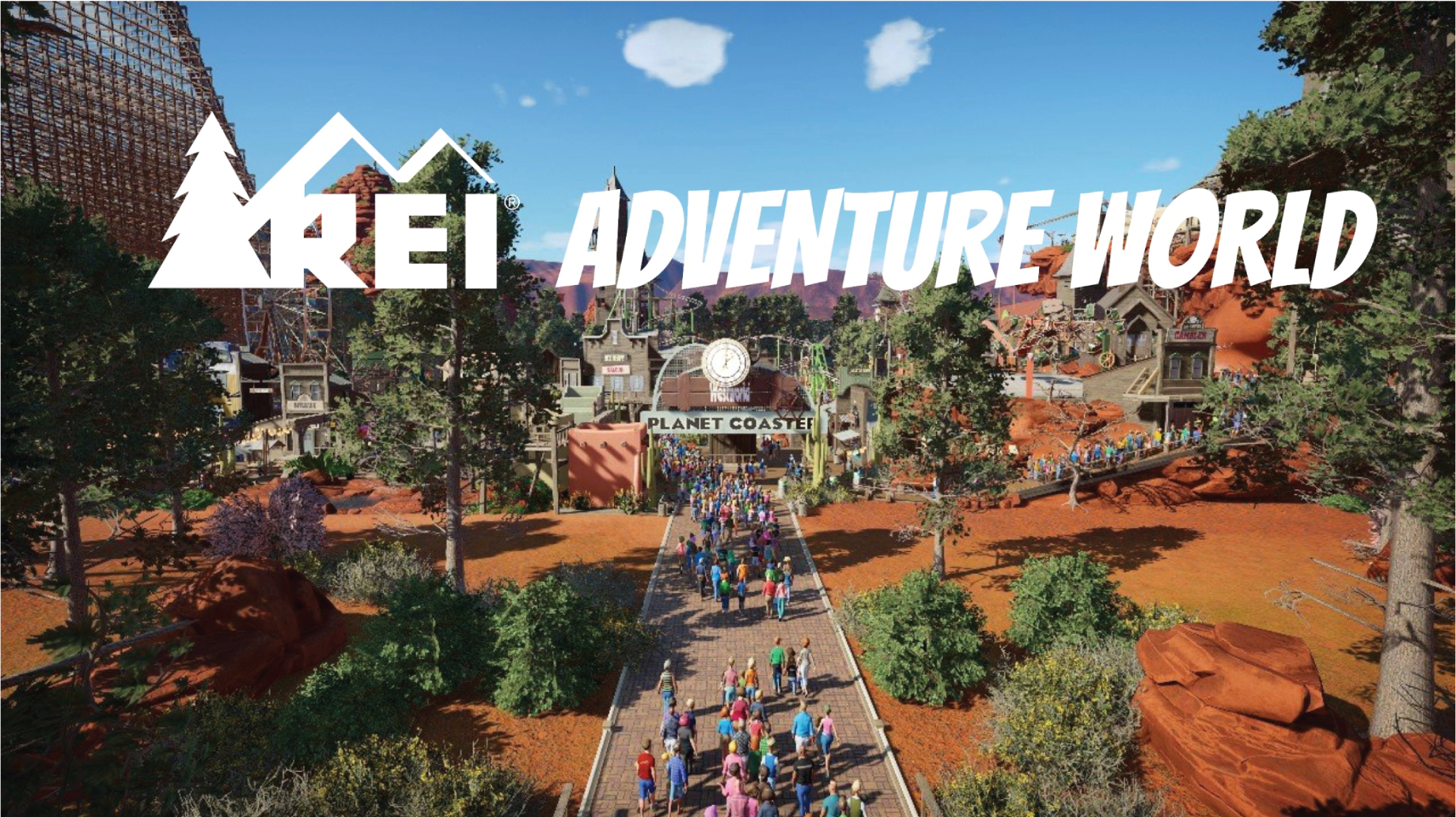

Survive The Apocalypse in Style: (*all prices listed are pulled from actual products on REI’s website, similar found clothing items on Depop, and an ad for a vintage Restored Ford Bronco for sale)
“This brutal victory parade of capital through the world, its way prepared by every means of violence, robbery, and infamy, has its bright side. It creates the preconditions for its own final destruction.” - Rosa Luxemburg, quote from “Socialism or Barbarism: Selected Writings” 2010
Identities
Identities examine the brand through the framing of who we are as people and the language and social constructs we use to identify as such.
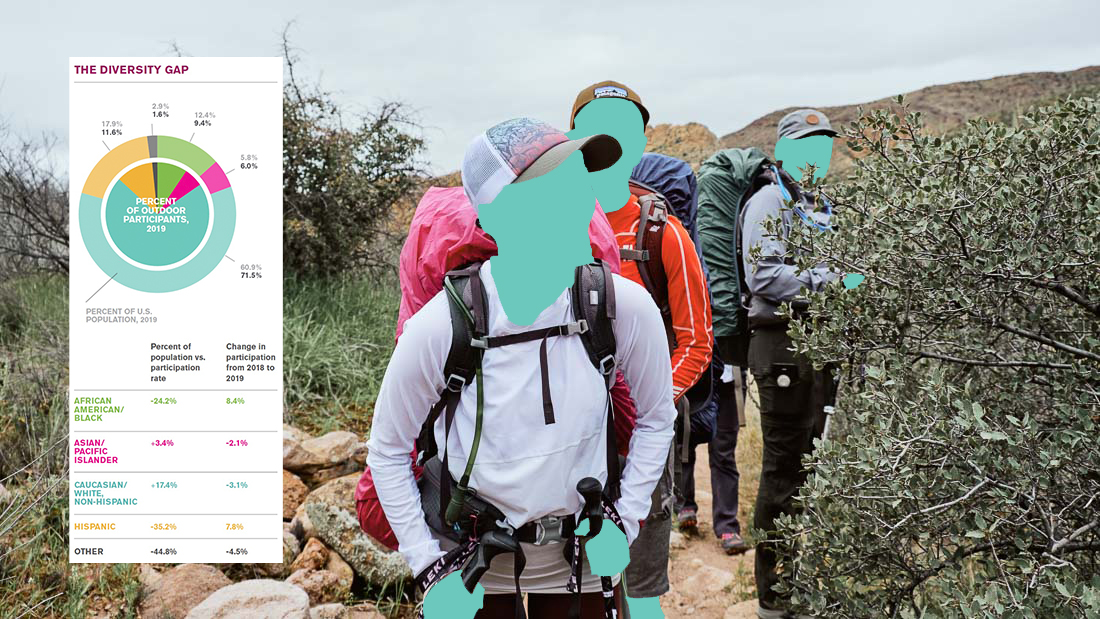



Patty Gonia, Drag Queen CEO: In 1967, the CEO of REI, Jim Whittaker climbed Mt. Everest. In this image, I have replaced Jim with a fabulous drag queen, named Pattie Gonia. She is an environmental activist for "Mother Natch" and drag performer best known for surfing in heels, staging an elaborate wedding (to herself) in Yosemite, upcycling outdoor gear into fabulous costumes (sexy snow monster, anyone?), and delivering tongue-in-cheek PSAs against littering toxic masculinity. I think she would be perfect as the new CEO of REI!
Personal Reflection

The method of (de)branding is an interesting concept I almost scoffed at when the prompt was first introduced. It felt too simple, even silly at times, inverting and intensifying colors, logos, values, images, and copywriting. Creating things that would never normally exist, the opposite of “good branding” felt counterintuitive. The only way I could allow myself to let go of my designerly ways was to laugh to myself and say, “I’m trying too hard to make this good. Let’s make it BAD.” Letting go of the good, and leaning into the bad and the ugly is maybe the superpower of (de)branding.

Why make an REI Survival Ad for an apocalypse that may never happen? Well because it’s absurd to think about putting a price tag on fashion and camping gear when the world is ending and people would actually buy it. In this way, the lens of absurdity offers an honest critique of the brand. It superimposes a layer of cognitive dissonance over brand loyalty and brand destruction. You feel as though you’re making something completely unrelated, but when you return to the REI logo, their wholesome values, their sweet co-op card, the criticism of the brand becomes so obvious it’s almost infuriating.
This method of working has largely impacted my creative practice now and in the future. Not only have I learned to kill the designerly perfectionist in my head, I have also learned a new method of critical analysis. In this examination and deconstruction of REI’s brand, I have also inadvertently examined myself. Before this project, I thought my identity and values, were so Lauren Johnston BRANDED Fall 2022 clear and unshakable. I’m queer, I love animals and sustainability, I buy from ethical companies who share similar values as me, right?
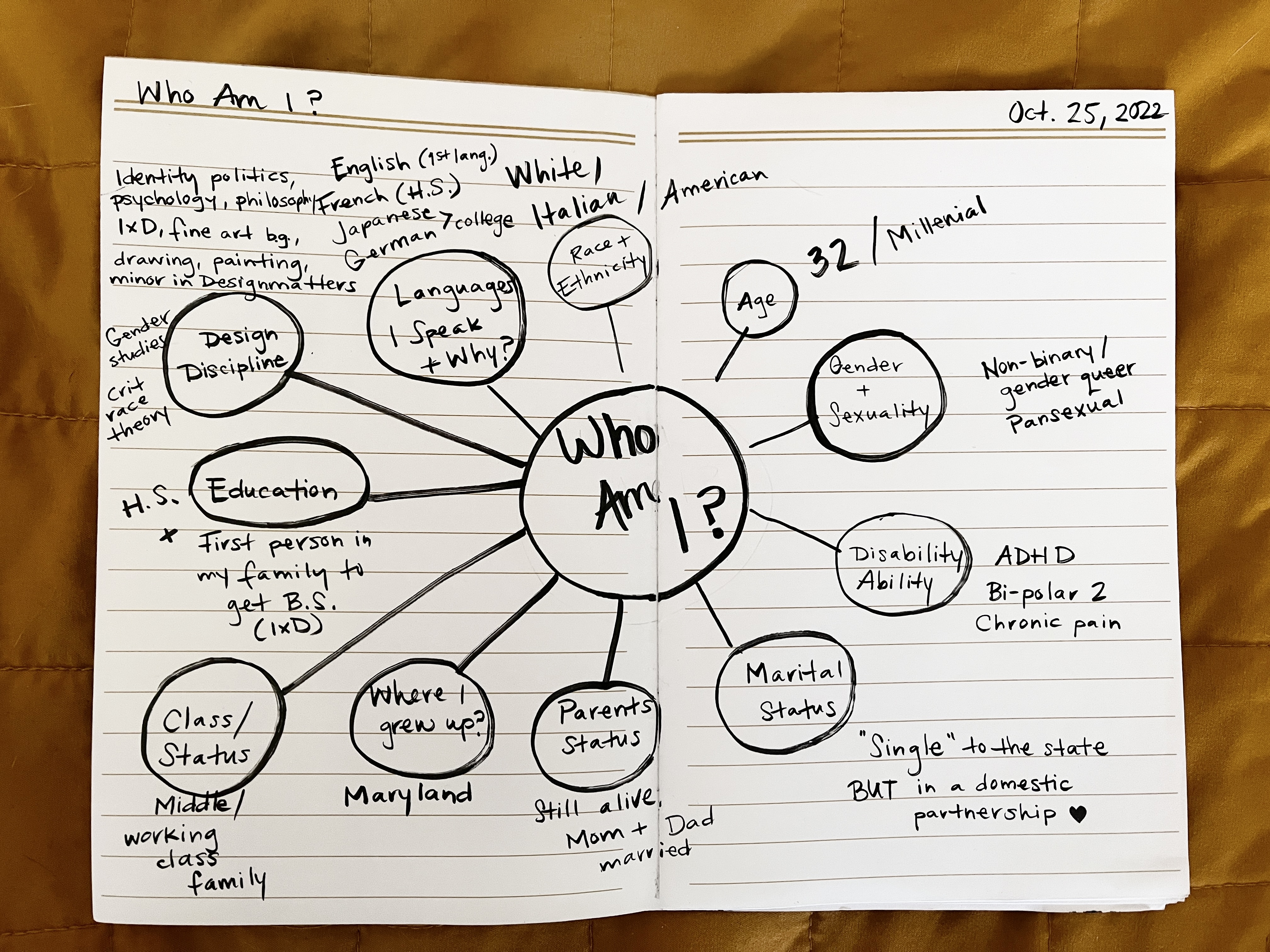
I won’t say it’s totally shocking to learn REI is at best, imperfect and at worst problematic and outright dishonest. I had acknowledged before this class what it means to participate in a Capitalist society. Being a consumer comes with two price tags, one is spending your actual hard-earned money, and two is the guilt you feel for wanting anything at all. I had largely accepted that every company has some issues, but that voting with your dollars on the ones who “try their best” is what makes my purchases count for something. Now I’m not convinced that shopping at REI is any better than shopping at Bass Pro Shop or Walmart. REI just does a good job of wearing the guise of liberal, granola-munching, inclusivity-toting, environmentalists who love their litle co-op family. Their brand is the veil, and the veil has been lifted.